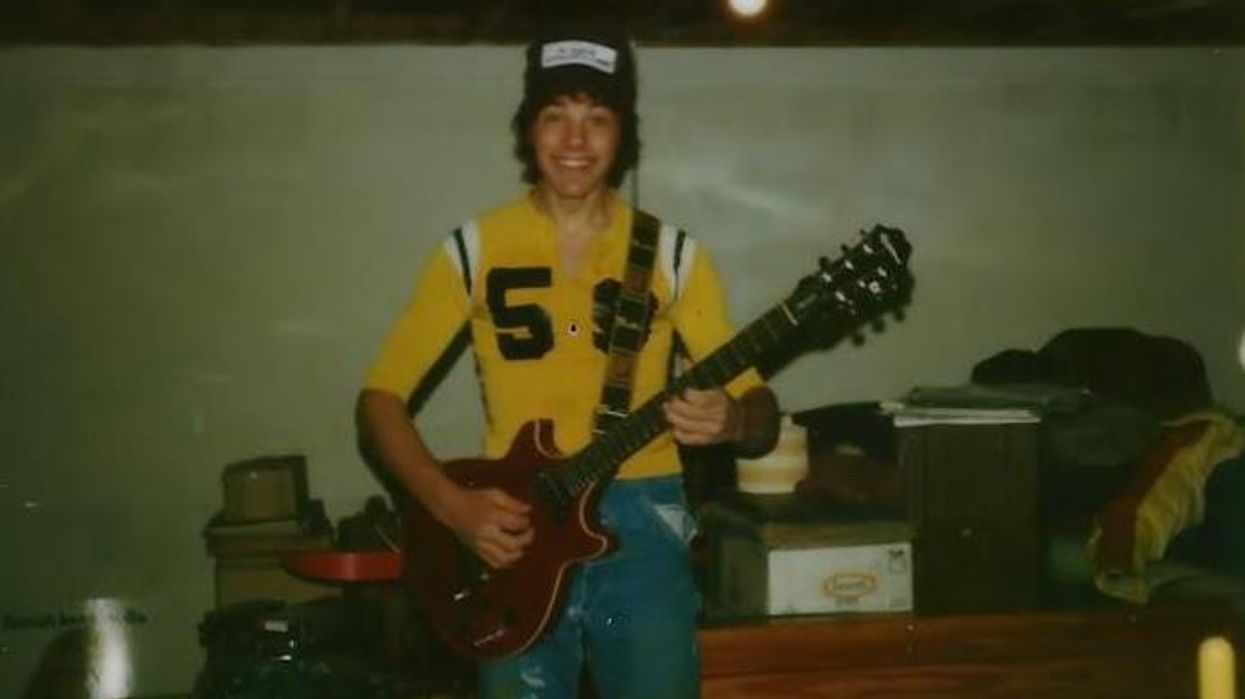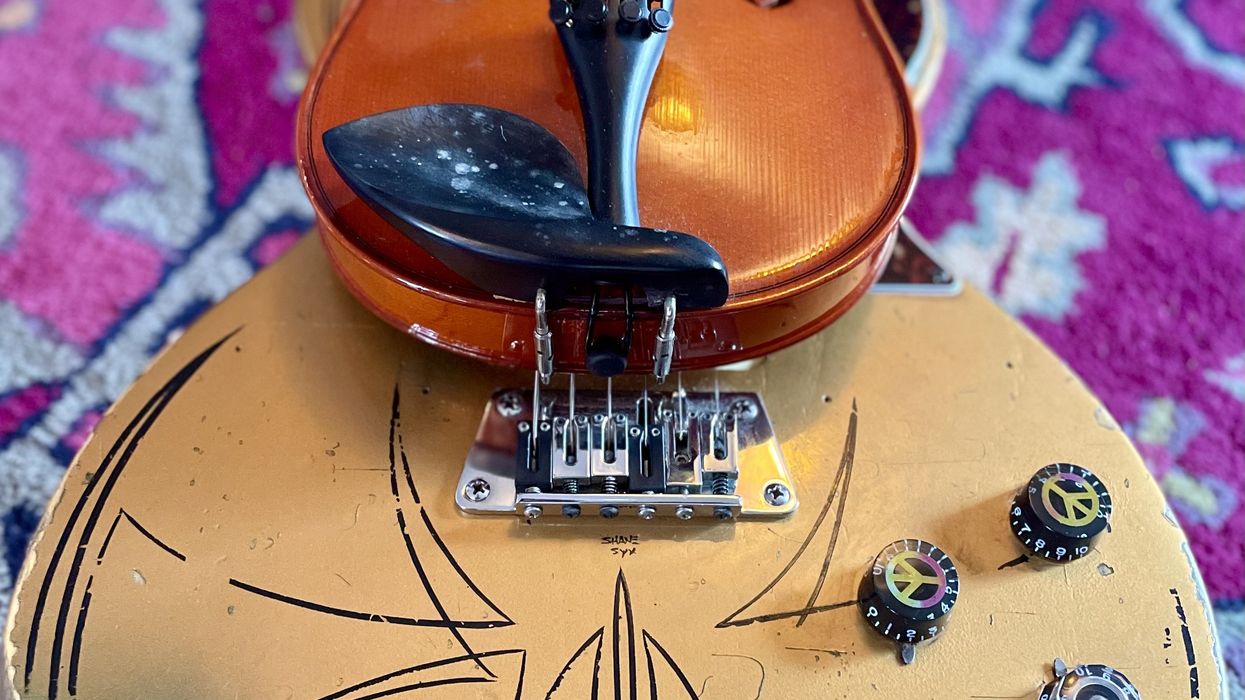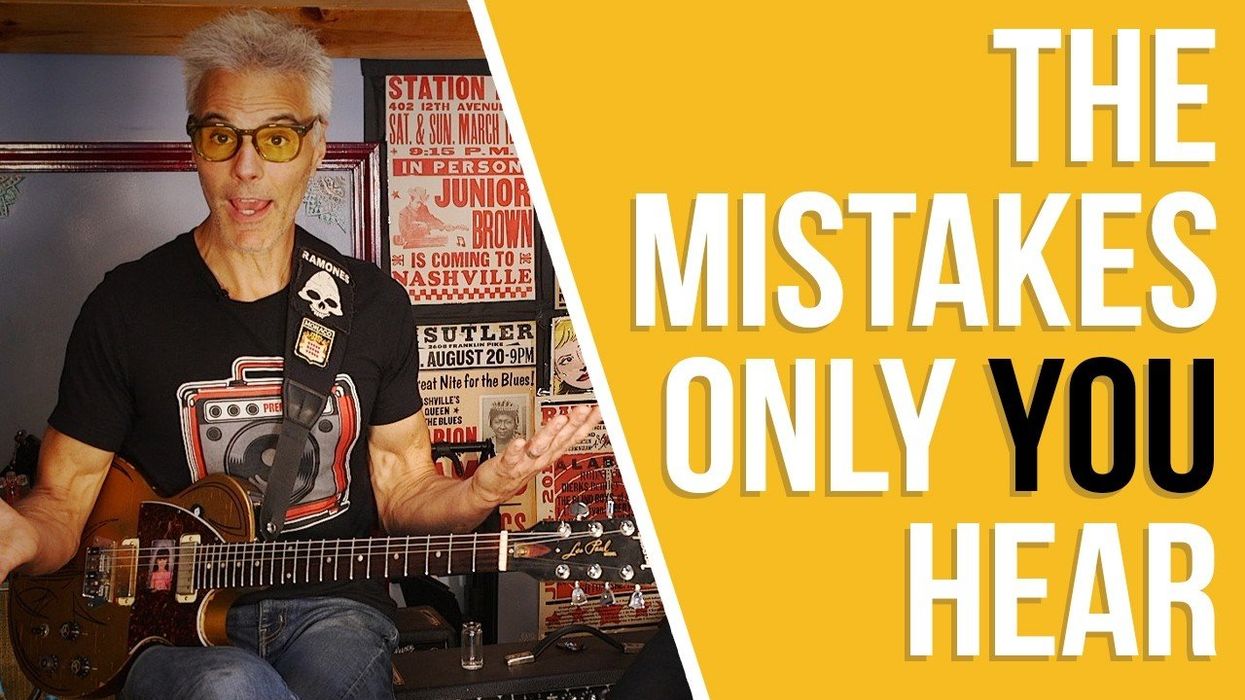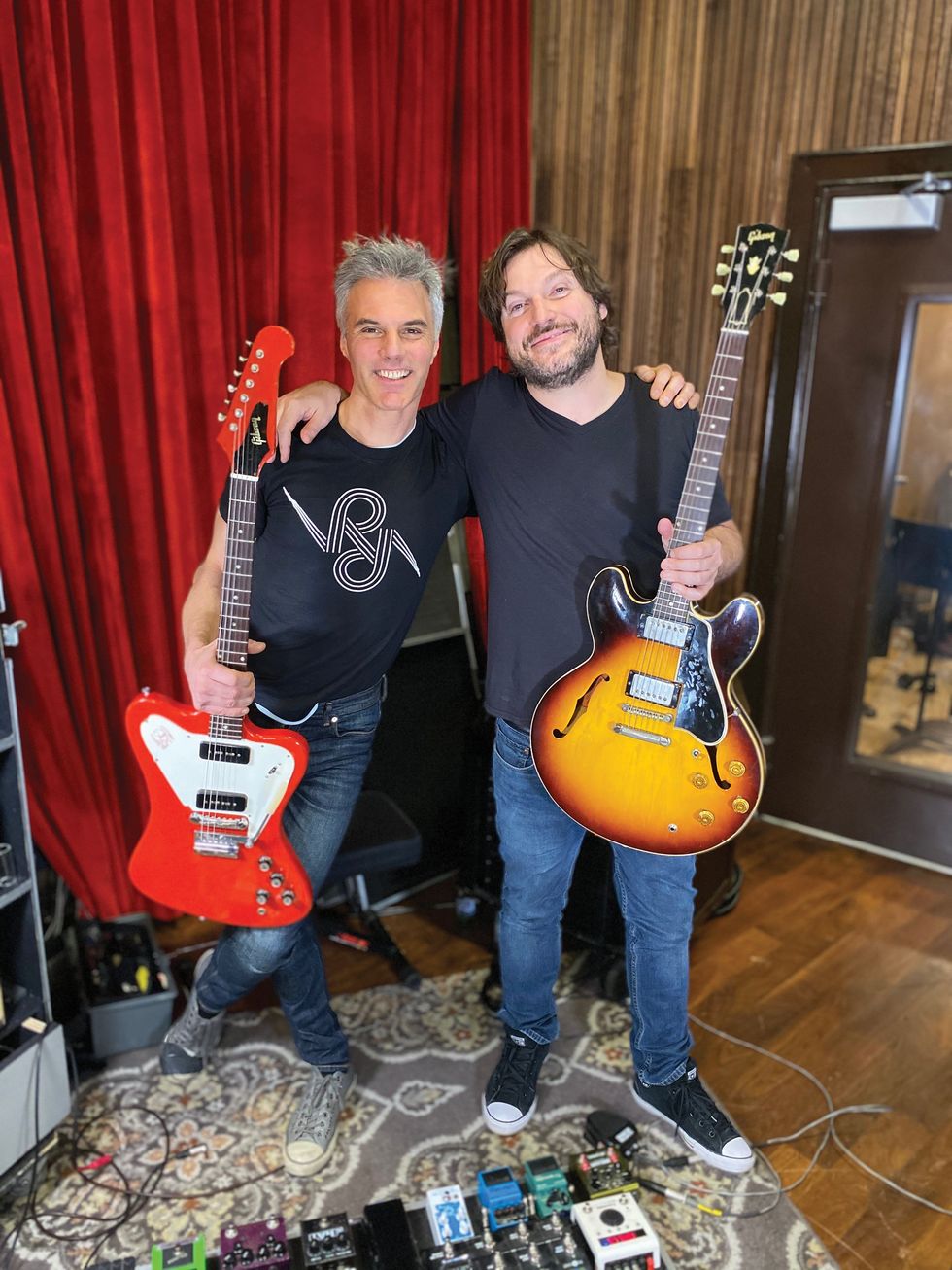Not that I deserved it, but Santa was very kind this year. And by “Santa,” I mean my father-in-law, Allan Malmberg. He’s an ace recording engineer whose business, Opus One, specialized in classical recording. Allan was winnowing down his gear collection and he gifted us several superb mics. A merry Christmas indeed!
The bequest includes an AKG C 426 B, a great-sounding and ultra-versatile stereo mic. Among other things, it’s perfect for comparing and contrasting various stereo-miking techniques for acoustic guitar.
Nashville Know-How
This isn’t the first time Premier Guitar has covered this topic. One of my fave PG items ever is this Andy Ellis video in which Nashville studio pros Bryan Clark and Adam Fluhrer demonstrate several stereo miking techniques. Check it out! I’ll wait.
I cover similar turf, but with one difference: Thanks to the stereo mic, I can compare the techniques without changing the instrument, the mic, or their relative positions. This provides a reasonably objective basis of comparison.
Note that you don’t need a stereo mic for these techniques. You can use any good-sounding pair, subject to a few limitations we’ll discuss.
SeX/Y stereo
In x/y stereo recording, two mics are positioned as close as possible to each other, with one angled left and one angled right at something like a 90-degree angle. That way the sound reaches the two mikes at nearly the same instant, minimizing phase problems. You set the mics to directional patterns (assuming your mic patterns are switchable). They can be cardioid, hypercardioid, or figure eight, all of which favor sound from straight ahead over sound coming from the sides.
Check out the two examples in Clip 1. (Headphones recommended.) First you hear both mics set to figure-eight patterns, and then both mics set to cardioid. The instrument is an old rosewood classical guitar strung with Thomastik-Infeld rope-core strings and tuned low.
The figure-eight mics produce a nice, fat stereo image, with some room color via the rear sides of the mics. The cardioid version has less stereo drama, but the guitar commands center stage with more impact and presence. Your choice might be a matter of how hard-hitting you want to sound, or whether the ambience in your recording room is worth capturing.
Mid vs. Side
Mid-side technique (m-s for short) can be bewildering at first, though Clark explains it well in the video. To further complicate matters, you usually don’t hear the effect till after you’ve recorded it. But m-s recordings have two advantages: They always sound good when heard in mono. (Phase problems can arise with other techniques when summing to mono.) Also, you can change the stereo width after you’ve recorded.
The side-facing mic must be set to figure eight, so it hears equally from left and right. The front-facing mic can be cardioid, figure eight, or omni (you’ll hear all three). After recording you must duplicate the side-mic track in your DAW, and then flip the duplicate out of phase with the original. (Some DAWs have a phase-reverse switch on the channel strip. Others—like my DAW of choice, Logic Pro—require a plugin.) Pan the side-mic tracks far left and right. If you solo these two tracks, you hear only silence. It’s 100 percent phase cancellation. But if you start with the front-facing recording in the center and gradually raise the two side-facing tracks, a stereo image appears. (The louder the side signal, the more dramatic the stereo.) It’s like magic—at least if you’re not an acoustician.
Clip 2 starts with the forward-facing mic also set to figure eight for a nice, naturalistic stereo spread with a touch of room color. Then I switch the mic to cardioid for a more center-forward sound. Finally, you hear the front mic set to omni for a more diffuse and roomy effect. Again, your choice might depend on how much center impact you desire and whether the room sound is worth capturing.
To A/B or Not to A/B
What about just setting up two mics some distance apart and angled inward, as if they were stereo speakers? This A/B technique provides a realistic stereo effect, though the two sides can often be out of balance, like the left-heavy sound of Clip 3.
Conventional studio wisdom dictates at least three times the distance between the two mics as between the mics and the sound source, and that’s what you hear first. After that I “break the law,” arranging the guitar and mics so that all three objects are about 18 inches apart. This produces a warmer sound thanks to the proximity of the mics, though there’s a slight loss of sparkle due to phase conflicts. Still, it’s still an attractive and usable sound.
Mono Me
There are many appealing options here. For a solo guitar recording featuring this particular instrument, I’d probably go with the m-s arrangements with the front-facing mic set to cardioid (strictly a personal call). Or I might choose something a lot simpler: plain old mono, as heard in Clip 4.
I hope I’ve provided a clear overview of the options so you can zero in on the best technique for your needs the next time you take a walk on the stereo side.










![Rig Rundown: Russian Circles’ Mike Sullivan [2025]](https://www.premierguitar.com/media-library/youtube.jpg?id=62303631&width=1245&height=700&quality=70&coordinates=0%2C0%2C0%2C0)








